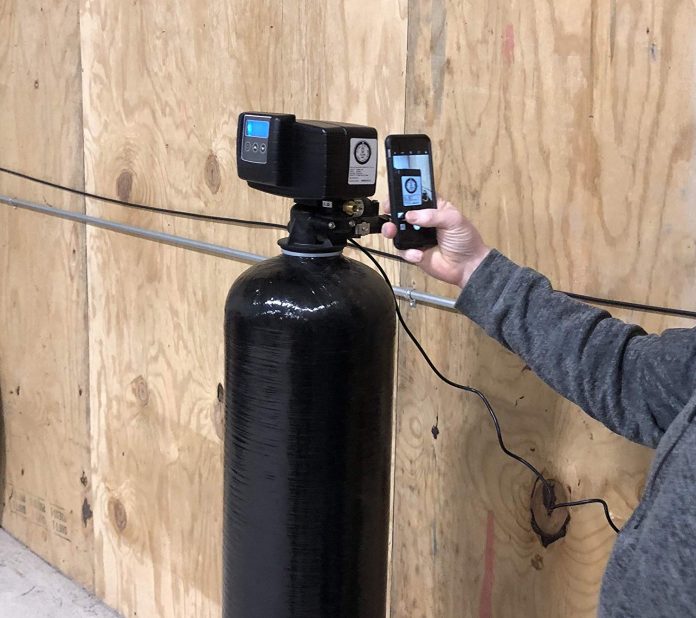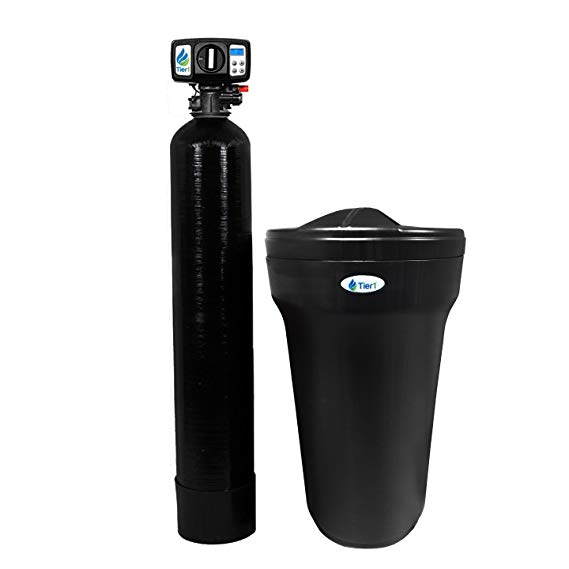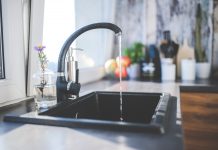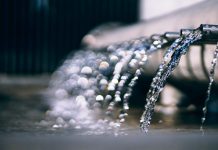
Image from Amazon
Water is a basic requirement for living. What you may not realize is that the quality of your water can affect the quality of your life as well. If you have hard water, you may be spending more on detergents, lotions, and even appliances and maintenance costs. A water softener may provide the solution you need. Read more to discover more about softeners and how to size a water softener properly.
What Are the Benefits of a Water Softener?
Image from Amazon
Before you size a water softener, let’s discuss the benefits of a water softener. As many as 85% of homes in North America are affected by hard water. Water containing calcium, iron, and magnesium can cause a variety of issues in your home. You may have clogged shower heads that require frequent cleaning to remove mineral deposits or replacement of shower heads. You could also have stains on tubs, showers, sinks, and toilets which can be difficult to remove. You may see mineral buildup on pipes, which decreases the flow of water. You may notice the inefficiency of the hot water heater as caused by mineral buildup, leading to increased utility bills or frequent replacement of appliances. Finally, you may observe the inefficiency of your washing machine, leading to more detergent used and therefore, increased spending.
Common Signs of Hard Water
Before you size a water softener, let’s discuss how you know if you have hard water. If you live in an area where water is supplied to you from a municipality (this could be a city or a county), you can call your local water district and ask about the hardness of your water. If your water is supplied by a well, you can have your water tested by a professional, or you can buy a testing kit to do it yourself. These tests are available at many hardware stores, big box stores, and online. Here are some other signs that you may have hard water in your home.
- Dishes that are hazy or often spotted
- Stained sinks, tubs, toilets, and showers
- Appliances that require frequent replacement
- Clogged pipes
- Dry skin
- Clothing stained yellow or with a grey tint, even after washing
How Does a Water Softener Function?
Before you discover how to size a water softener, let’s discuss how a water softener works.
- Hard water containing minerals like calcium, iron, and/or magnesium enters the water softener treatment tank.
- Resin bonds with the minerals.
- Water is processed through a resin bed.
- Water is strained and resin is trapped.
- Soft water travels through the softener.
- Soft water exits the softener to the home for use.
What Exactly Is Water Softener Regeneration?
Before you explore how to size a water softener, let’s discuss the term “regeneration.” You may hear or see this term when shopping for water softener systems. As the water softener system works, the resin bed becomes covered in hardness particles. To rid the system of these particles, the water softener must perform a regeneration cycle. The regeneration cycle allows water to be mixed with salt and particles to be removed from the bed. Now the water softener is ready to process the next batch of hard water and create more soft water for use in your home.
How to Size a Water Softener 101
Now we are ready to calculate how to size a water softener for your home. To do this, we need to determine the daily softening requirement. The daily softening requirement must be calculated using your water hardness and water consumption.
Step 1: What Is My Water Hardness?
The first step in figuring out how to size a water softener for your home is to determine the water hardness. Your water hardness is determined by the amount of calcium and magnesium in your water. Water hardness may be measured in milligrams per liter (mg/L), parts per million (ppm), or grains per gallon (GPG). GPG is the most common way to report water hardness. However, some tests measure water hardness in mg/L or ppm, so you must perform a conversion by dividing the measurement by 17.1 to get the GPG measurement.
You must know the hardness of your water to properly program the water softener system. In addition, water hardness is a factor in determining the size of the system that is needed for your family.
What about Iron?
The presence of iron in your water is also a factor in determining hardness. If iron is present in your water, you must perform an additional calculation. For every mg/L (or ppm) of iron present in the water, add 3 GPG of hardness to the hardness value. Some experts recommend adding 4 GPG of hardness to be on the safe side in your calculation.
Step 2: What Is My Water Consumption?
The second step in figuring out how to size a water softener is to determine the water consumption of the home. You can view your water bill to determine your water usage. Most water utility companies bill this service monthly. If this is true in your case, your bill will reflect the usage for members of the family living in your household for the month. Remember to divide your monthly usage by the number of days in the month to get your daily requirement. If you have a well that supplies your water or you do not have access to your water bill, you can calculate an estimate of your daily usage. Multiply the number of people living in your household by 80 gallons per day. This is a conservative estimate for gallons per day usage of water. Some experts recommend using a 100-gallon per day usage estimate if you like to take long showers, for example.
Step 3: How Do I Calculate My Daily Softening Requirement?
The third step in figuring out how to size a water softener is to determine the daily softening requirement. Multiply the hardness level found in Step 1 by the daily water consumption found in Step 2 to get the daily softening requirement. This calculation tells you the number of hardness grains per day that need to be removed from your water by the water softener.
Step 4: How Do I Calculate My Total Grain Capacity?
The fourth step in figuring out how to size a water softener is to determine the total grain capacity. The water softener removes the hard grains until it reaches their capacity and must regenerate. Regeneration must occur because all the resin inside of the water softener has saturated and can no longer bind to any more mineral ions. The regeneration process removes the minerals and recharges the resin. Most water softeners must perform the regeneration process every 6 to 7 days. To calculate the total grain capacity, you must take the daily softening requirement obtained in step 3 and multiply it by the 7 days required for each regeneration process.
Step 5: What about the Efficiency of the Salt?
The fifth step in figuring out how to size a water softener is to consider the efficiency of the salt you are using. Simply put, you want to perform a partial regeneration of the water softener resin bed rather than 100 percent regeneration because it is more efficient to do the partial regeneration. Doing a full generation would require a lot more salt (which would cost more money), and the efficiency per pound of salt is lower. One way to determine the efficiency of the salt is to look at the rating of the water softener. This number is a rating that shows how many hardness grains a water softener can remove with the least salt under real-world circumstances. Many experts recommend looking for a water softener with a National Sanitation Foundation (NSF) certification rating.
Sample Calculation
Here is a real-world example of the calculations discussed above. In this example, the water hardness is 120 ppm.
Step 1a:
Find water hardness. 120 ppm / 17.12 = 7.00 GPG
Step 1b:
Account for iron in the water (if necessary). 2 ppm iron X 4 = 8 GPG 7.00 GPG + 8 GPG = 15 GPG
Step 2:
Find water consumption. 4 people X 80 gallons per day = 320 gallons per day
Step 3:
Calculate daily softening. 15 GPG X 320 gallons per day = 4,800 hardness grains per day
Step 4:
Calculate total grain capacity. 4,800 hardness grains per day X 7 days = 33,600 grains per week
Step 5:
Consider salt efficiency. View a chart with grain capacities and water softener tank sizes to determine the correct size water softener for you.
Conclusion
Hard water can wreak havoc on the systems in your home. It can lead to frequent appliance replacement due to minerals on the appliance mechanisms. It can cause a buildup on pipes that restricts the flow of water. It can also lead to stains in your bathroom and kitchen. It can cause mineral accumulation on your dishes and glasses, leaving an unattractive film. It can also affect the condition of your skin and hair, causing dryness, itchiness, and mineral buildup. Installing a water softener system is a very easy way to control the minerals in the water used by your family members every day and increase the longevity of your household appliances.




